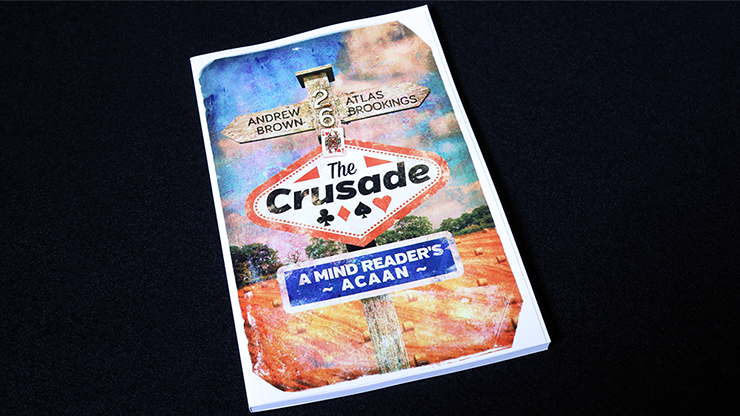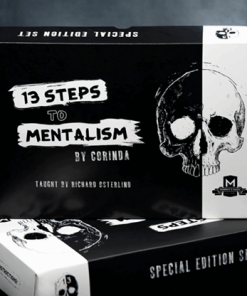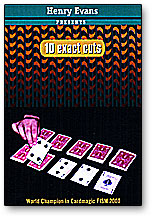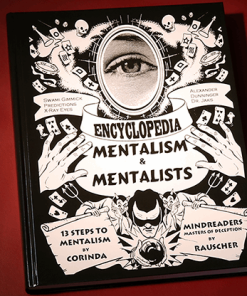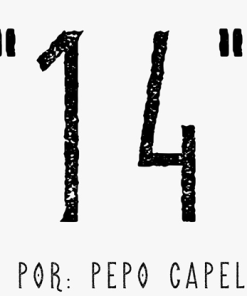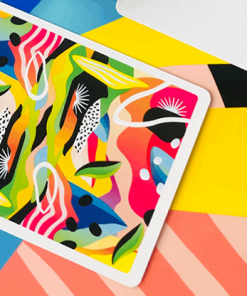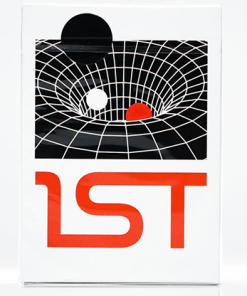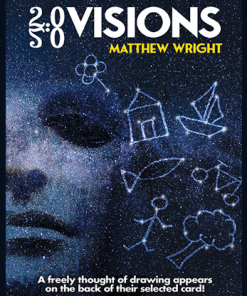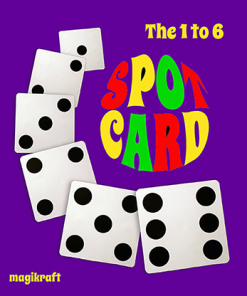The Crusade by Atlas Brookings – Book Murphy’s Magic Supplies, Inc.
$ 53,95 $ 26,98
The cards rest on the table in front of your first participant, who gingerly picks them up and begins to count down to his secret number – a number that has never been written down, verbalized, or communicated to any other person.
He counts down slowly, card after card, and then, abruptly, stops. He pauses and sets this last card aside. He has never said a word about his number. There is no way that you could have known what it was. He is confident of that.
He slides the card across to the young lady next to him. Her thoughts have been focused on an image – a suit and a value. Again, her choice of card has never been shared. It has never been withdrawn from the pack, never touched, and certainly not forced.
She could have been thinking of any card in this deck.
Her hand drifts toward the card on the table. The one separated just now, by her boyfriend, from the rest of the pack. The one resting at the number that he was merely thinking of.
She hesitates.
The deck is their own, they shuffled it before you ever touched it. They called all the shots every step of the way.
Neither participant has ever given any indication what it was that they were thinking of, and neither believes in the ability to read minds… and yet… if the card she was merely thinking of is here, at the number that he was merely thinking of…
As though she is reaching out to touch her own delicate skepticism, her fingers flit tentatively across the card on the table – her card.
And as she reveals its face, she gasps – it is the Queen of Clubs – but it is more than that. It is belief, radiant and beautiful and glorious, a moment of dawning acceptance that will be remembered because it defied all her reason and filled her ideology with doubt.
It is a moment of pure enchantment.
And you made it happen with a borrowed deck of cards that they shuffled before you ever started.
Take A Moment and Enjoy an Excerpt from the Text:
INTRODUCTION
Before we look at anything even remotely to do with methodology, let’s first take a moment to examine the origins of this title. This exercise is undertaken in the hope that you will find beauty in its layered complexity and reassure yourself that the same sort of attention to detail and search for perfection in arriving at a title for this book is the standard offered by these authors throughout this document.
Why is this called The Crusade: A Mind Reader’s ACAAN?
To many in the magic industry and to card magic enthusiasts especially, the ‘Any Card at Any Number’ plot is a cherished and well-loved miracle. Its perfect execution is so highly prized and sought after that it is popularly referred to among card enthusiasts as the ‘Holy Grail’.
That begs the question – was this title merely a clever play on words?
It is true that the Crusades and The Holy Grail are linked in popular lore. But while the association is interesting, there is more at work here than just opportunistic wordplay.
You see, the Holy Grail was the destination, the final prize at the end of these stories of persistent knights and daunting expeditions, whether they have their basis in fact or fiction. It bears emphasizing once more – the Grail was the destination.
The merits of the ACAAN effect have been argued back and forth for many years in the magic community.
Others, however, despise the plot and note sourly that the reaction from the audience is frequently less than enthusiastic. One person names a card and the other names a number and lo and behold – they match!
It is over so quickly that it often plays as a puzzle rather than as an amazing feat that fills a person with wonder.
The argument rages back and forth, and fruitful and enlightening perspectives have emerged. Some claim that the weaknesses lie in a lack of performance ability. Others argue that the plot is fundamentally unappealing to any demographic but magicians.
The most experienced among us have consistently demonstrated that an individual will fail to recall the workings of a puzzle, but when they are escorted into an experience that fills them with wonder – when you take them on a journey that creates that wonder – they will never forget their sense of amazement or the guide that lit their path.
So, in the title The Crusade, you have a reminder that what you are presenting is about the journey and not the mythical Holy Grail that is at the end of it.
In folklore, the term ‘Crusade’ has also shaken off its religious overtones and become synonymous for a period of endeavor and path to improvement – the path, mind you, NOT the destination – which, in many ACAAN plots is arrived at too quickly to have any impact.
One other important point about the title of this book. The root of the word ‘Crusade’ is the Latin word cruc or crux – meaning cross.
And, of course, a cross is formed at two points of intersection. And what is an intersection but the place where the roads taken by two different travelers on two unique journeys meet?
This moment of meeting is what The Crusade allows you to create. When the card that one person only thought of intersects at the number another person only thought of – the journey that you created for each of them becomes the destination, and an experience is formed that will create a sense of amazement whose memory will never fade.
To a performer, that is The Holy Grail.
And the path to the Grail is through the Crusade.
This softbound book is 109 pages long and offers an opportunity to astound your audience with an impossible and satisfying piece of mind reading!
| Default Title | Default Title |
|---|
Fast shipping and professional packing
Because of our long-standing relationship with UPS FedEx DHL, and other major global carriers, we are able provide various shipping options. Our warehouse personnel will pack each item according to our strict specifications. Prior to shipping the goods are thoroughly inspected and secured. Every day we ship hundreds of packages to our customers across many countries. The fact that we're dedicated to becoming the largest online retailer in the world is evident. The warehouses and centers of distribution are in Europe and the USA.
Note that orders containing more than one item are processed according to the particular item.
We will inspect each and every one of the products before they are shipped. Today, the majority orders will be shipped within 48 hours. The delivery time will be between 3-7 working days.
Returns
The stock market is always changing. It's not entirely managed by us, since we are involved with multiple organizations, such as the factory and the storage. The actual levels of stock can change at any time. Please understand it may happen that your order is out of stock when the order has been placed.
Our policy runs for a period of 30 days. However, if the 30 days have elapsed from the date you purchased the product, we are unable to give you a refund or exchange.
For your item to be eligible for return, it must be unopened and in the condition you received it in. It should also be in the original packaging.
Related products
Playing Cards
2021 Summer Collection: Jungle Playing Cards by CardCutz Murphy’s Magic Supplies, Inc.
Playing Cards
2021 Summer Collection: Mountain Playing Cards by CardCutz Murphy’s Magic Supplies, Inc.
